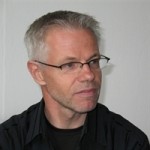FLARE and COP21
Paris lives and shivers (a little). At first the state of emergency is barely noticed. However, when talking to people they say they feel ‘different’. For me it was different as well, the trip from Gare du Nord to the city centre I felt a bit more tensed than other occasions I visited Paris. I am here to visit the FLARE (Forests and Livelihoods: Assessments, Research and Engagement) conference. Climate and forests are strongly interlinked: deforestation and degradation of forests would cause 15 to 20% of global warming. At this moment all attention goes out to large forest protection programmes and governments that should implement these. It is often forgotten that over 1 billion people are directly dependent on forests for their existence, especially in poorer regions of the world. These people need wood for construction, wild animals, fruits, nuts, cattle feed etc. Climate change hits this group of people directly, forest protection programmes like REDD+ should take into account their interests. This conference draws attention to this issue and wants to inform COP21, starting Monday, on the current research insights.
As participant of the conference we are privileged, the conference takes place in the beautiful building of Museum de l’Homme facing the Eiffel tower across the Seine. The view from the museum on the Eiffel tower is stunning, both during the day and enlightened at night. Besides, every hour it changes into a funny flashy Christmas tree. The regular tourist has to pay for this, as participant you can just enter the museum (after security check of course).
Even though COP21 hasn’t started yet, everywhere advertisements of the conference can be seen. Large billboards at the underground announce it with slogans like ‘we need to use this opportunity to save the earth for our grandchildren’. Personally I do not expect much of these large conferences like COP21. My first COP was in 1994 in Berlin when the majority of climate policy still had to be designed like the Kyoto Protocol in 1997. Back then I was a PhD candidate looking into how these kind of agreements come to existence. Meanwhile it is 20 years later and I perform research into influence of international policy on local level and the other way around. Now we are back at livelihoods of vulnerable groups of people that are strongly dependent on forests for their survival.
On paper the targets of the Kyoto Protocol are realized in 2010 – a reduction of about 5% of the emissions of gases that cause global warming compared to 1990 – although these goals were only applicable to a couple of industrialised countries. Looking at the total emissions at a global scale the reduction of emissions is only a small part of this 5%. Beside the fact that this 5% is only a fraction of what scientists expect to be necessary to keep global warning within ‘safe’ boundaries (which is a discussion point as scientists now think this will be 1 or 1.5 degrees Celsius while at COP21 everyone counts on the well-known 2 degrees limit). To respect these ‘safe’ boundaries we need to reduce our emissions with 80 or 90% coming decades. This kind of outcomes will not be part of COP21.
Yet not all critics are pessimistic. The approach has been changing. Countries are not trying, as previous conferences, to come to one joint action plan. This time every country is allowed to come up with its own plan, so called INDCs (Intended National Determined Contributions). Almost every country, including China, Brazil and India, joins this approach and not only a few industrialized countries. This approach seems work better than the previous. The plans announced, when implemented, would reduce global warming to 2.7 degrees this century. By far not enough but much more than a scenario without doing anything or failing negotiations while pursuing one joint plan of action with obligated rules and plans for every country.
Bas Arts is professor Forest and Nature Management at Wageningen University. During COP21 he is sharing his impressions of the conference and the events around it on this blog.

